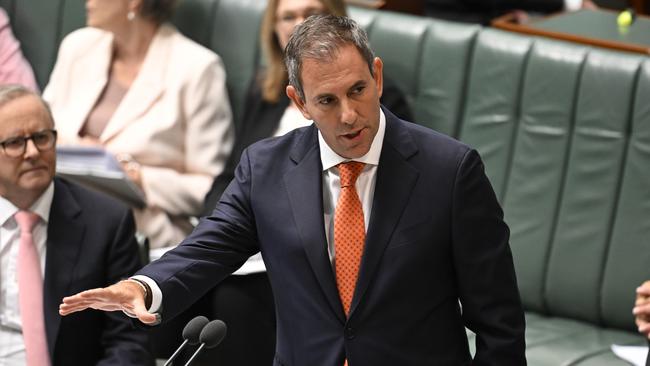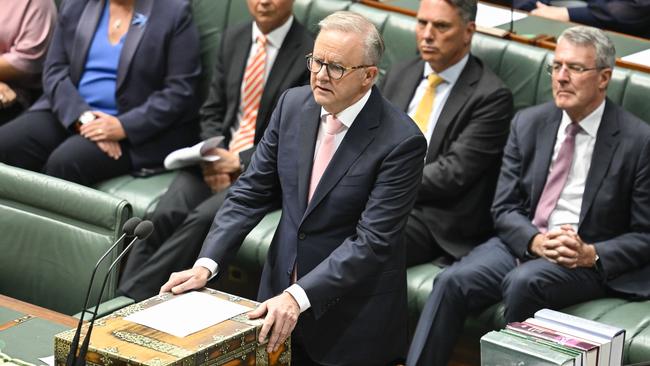Initially, the unrealised gains tax would be restricted to relatively few people, but will seep through the superannuation movement because the trigger is not indexed.
Inevitably it will then spread into other forms of savings. Eventually the family home may be a target. It represents a fundamental change to Australian taxation.
How do I reach these conclusions? When public servants conceal the truth it can be an accidental mistake, but almost always the concealment is part of a carefully thought out agenda. Often the minister responsible is completely fooled.
When the unrealised gains tax was announced as part of the 30 per cent tax on superannuation income on balances over $3m, Treasury claimed if the industry and retail superannuation funds were required to provide the data it would cause massive expenditures on new systems.

In theory this was true, but there were obvious, low cost, ways for the industry and the retail funds to retain control of the money and provide the income data to enable the 30 per cent tax to be levied without an unrealised gains tax.
Treasury officials are not stupid and they must have known this. For those Treasury officials, the superannuation tax was a side issue. This was the beginning of an unrealised gains tax for the nation.
The fact this wider tax would devastate Australian innovation, property and investment in smaller listed and unlisted enterprises was ignored. It is possible Jim Chalmers did not know and still does not know the hidden agenda. The traditions of the TV series Yes Minister run deep in wide sectors of the Canberra public service.
I will take you through the problems the Treasurer faced and the ignored, easy solutions which might actually benefit industry and retail funds:
• Fund balance data. All APRA-regulated super funds (including industry, retail, corporate, and public sector funds) must report members’ balances annually to APRA and the data ends at the MyGov website. This makes implementing the unrealised gains tax very easy.
Self-Managed Super Funds report their balances through their SMSF Annual Return, typically lodged with the ATO. This data feeds into MyGov, where individuals can view their total super balance. This also makes taxing the unrealised gains tax very easy.
• SMSFs calculate taxable and non-taxable income, and the data is also part of the super stream system which enables the tax office to monitor SMSF income from bank deposits and a large number of other income areas.
SMSFs can provide the data needed to calculate the 30 per cent tax. SMSFs report to the Australian Taxation Office, not APRA.
• Industry and retail funds report to APRA. In terms of taxation paid, each industry and retail fund is treated as one and taxation is not levied member-by-member. (In some situations a theoretical tax is calculated, but it is not real.)
And so, all the concessions which apply on an individual basis are lumped together.
We saw this in the franking credits debacle which helped Scott Morrison retain the Prime Ministership.

In the income calculation area, a person reducing their balances (for example, in retirement) might theoretically be forced to sell, say, BHP shares. But, in fact, because new money is coming to the fund no shares are actually sold and there is no tax paid. Treasury is right that altering that system would be expensive. Alternatives are not hard.
• Let me put forward two obvious ones, and I am sure there are many more. There already is provisions for an APRA (not ATO) controlled self-managed funds system where the trustees are not the members, but are instead an independent group. The management of these funds can be controlled by industry and retail funds and offer the same investment choices available to normal members. The income data can be provided.
Another alternative is to set up a large fund where the accounting is done on an individual basis. Again, the current fund investment choices be offered.
• Those people who appear to have balances of $3m in their superannuation, partly via various funds, would be notified by the ATO, but it would be a member’s responsibility to do the calculation.
If all their money is in self-managed funds the individual income data is clearly available. In industry and retail funds people would need to either transfer money into the conventional self-managed funds or adopt one of the choices offered by industry and retail funds.
Many have money invested in industry funds because of the attractive life insurance on the table, so they would choose the industry fund alternative to conventional self-managed funds.
• People who did nothing and could not provide an income figure would be taxed at a deemed rate of income, which would start low but then rise into double figures.
Had the Treasurer been offered those solutions, he would now have the 30 per cent tax in place for July 1.
But, as it stands, he is potentially complicit in the Treasury attempt to introduce an unrealised gains tax in Australia using the 30 per cent super tax as a Trojan horse.






As you dig deeper, the proposed 30 per cent tax on income from superannuation balances above $3m is actually a Trojan horse, or a smokescreen, for Treasury’s real agenda: a hidden plot to make unrealised gains taxes a massive source of income.